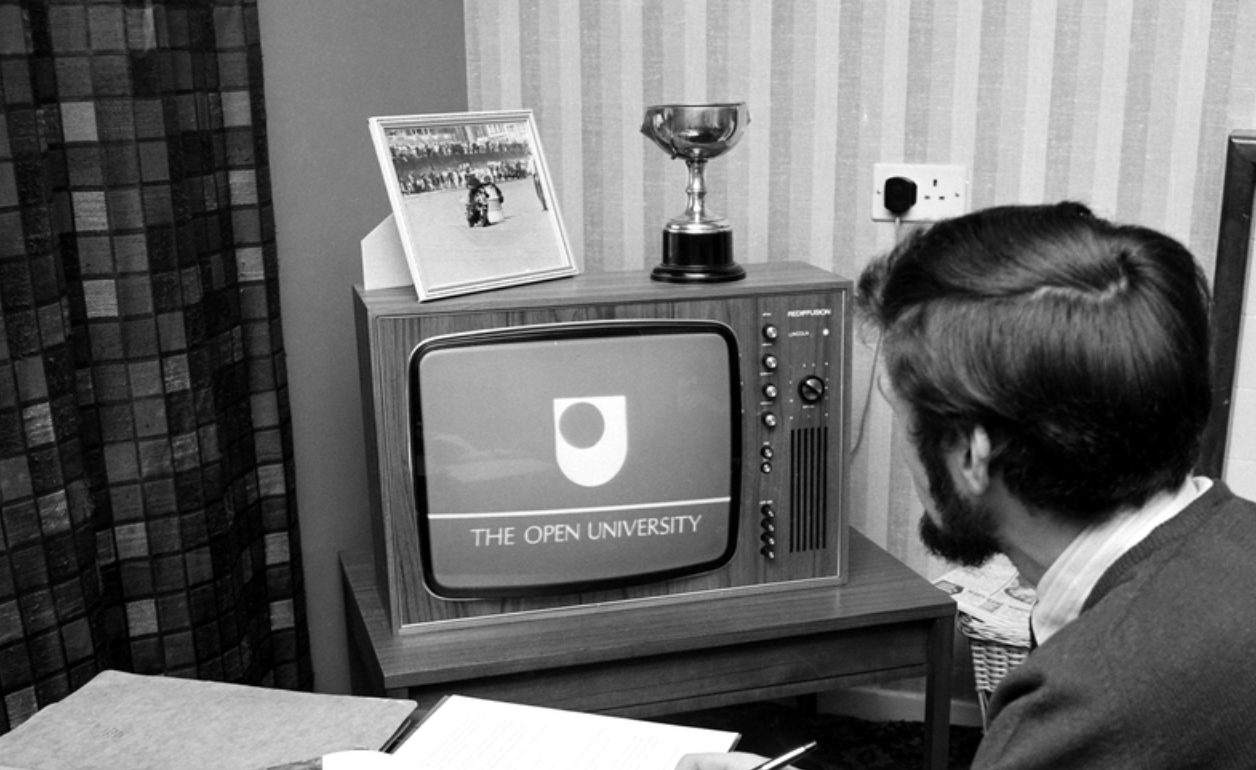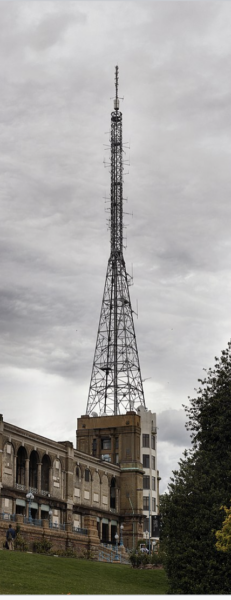
I am writing an autobiography, mainly for my family, but it does cover some key moments in the development of open and online learning. I thought I would share these as there seems to be a growing interest in the history of educational technology.
Note that these posts are NOT meant to be deeply researched historical accounts, but how I saw and encountered developments in my personal life. If you were around at the time of these developments and would like to offer comments or a different view, please use the comment box at the end of each post. (There is already a conversation track on my LinkedIn site).
The Audio-Visual Media Research Group
In 1973, I was given a small budget by IET to hire a research assistant, Margaret Gallagher, and so I was able to establish a small Audio-Visual Media Research Group. Eventually a number of research staff were hired or worked for the AVMRG between 1970-1989, including Hans Grundin, who focused mainly on transmission times, Nicola Durbridge, who focused on audio (radio and cassettes), Frances Berrigan, Diana Laurillard, Larry Kern, Ann Forster, David McConnell and Mike Sharples.
Researching transmission times
Initially, the audio-visual media research covered two main areas. The first was around strategic issues. For instance, there was a constant battle between the OU and the BBC in the early days about transmission times. The BBC wanted to push the OU broadcasts into times that were less popular with the general public, such as 6.00-7.00 am during the week. The OU wanted broadcasts at times when people were home from work. The Open University course teams wanted repeat broadcasts, so that if a student missed one transmission, they could catch the second.
The availability of transmission times was important because it would be difficult for the course teams to make the broadcasts essential if students had difficulty accessing them. If the broadcasts were not essential, students were not likely to watch them, and then it would be difficult to justify the large amount of money the OU was spending on the broadcasts (about one-fifth of its total annual budget.)
The AVMRG, and Hans Grundin particularly, collected viewing data, showing the impact on students of different transmission times and the effect of repeat broadcasts, when available (repeat broadcasts pushed the percentage of students viewing from roughly 50% to 75-80%).

The impact of recording
When audio cassettes became available, Nicola Durbridge in particular collected data on cassette recorder availability and use of audio cassette recordings. The research showed that students learned more from the recordings than the broadcasts. Eventually, the research indicated that learning was better if audio-cassettes were designed to incorporate the stop and repeat feature to embed student activities or reflection. Some lecturers, such as John Mason in Mathematics, became adept at combining audio cassettes with print (audio-graphics), an early predecessor of the Khan Academy. Radio transmission times could also be freed up if cassettes could be pre-recorded and mailed to students.
The AVMRG research became even more important when video-cassettes appeared on the scene in the early 1980s. The OU eventually created a special audio-visual library enabling students to access the recordings at any time.
Analysing TV programs
Margaret Gallagher, Frances Berrigan, Larry Kern and I spent a lot of time in analysing individual TV programs and how students responded to them. Programmes often were accompanied by extensive broadcast notes written by both the academic and the producer responsible for the program (these were mailed to students with their other printed course materials). As well as using the notes ourselves, we would also interview the BBC producer and the academic about what they saw as being the purpose of the program, or what learning outcomes were expected.
Postal questionnaires would then be mailed to all students on a course to arrive within a day or two of the broadcast. We would then work with a regional office to arrange for about 20 students taking the course to come in to a local centre and watch either the direct transmission or more usually a recording of the program, then we would record and analyse the discussion that followed. This qualitative data would then be combined with quantitative data collected by questionnaire from a larger sample of students.
Response rates to the questionnaires were usually high – 70% or more – and the qualitative data from the student discussion provided deeper insight into the reasons behind the quantitative results. A report was written for each program and distributed to the TV producer and academic responsible for the program for comment, then an amended report would be made available to the course team. Altogether over a period of about 10 years almost 100 programs were analysed in this way.
Using the research to guide resource allocation
Quite apart from the impact on individual producers and academics, the AVMRG research had a wider impact. For instance, because broadcast resources were limited, course teams had to formally bid for resources through the Broadcast and Audio-Visual Sub-Committee. The AVMRG was able to identify from the research a wide range of appropriate functions for television, radio and audio‑cassettes on Open University courses, and this list was sent to course teams to help them in preparing their proposals for broadcasting, and was also used by the Committee to guide its allocations. (This list was used as the basis for the affordances of video and audio that are included in Chapter 8.3 and 8.4 in my online open textbook, Teaching in a Digital Age).
What is educational television really good at?
My hunch from the NEC Gateway research proved correct. There was often a strong ‘affective’ or emotional response to the television programs in particular, but also sometimes to audio as well. This could have both beneficial or negative results. A good program could inspire and motivate learners. Some students, though, struggled with programs that were not didactic, that did not explain in academic terms what was being shown in the program.
It should be noted that most BBC programs, although they would have an academic presenter, were not lectures. BBC producers aimed to exploit the unique affordances of television. The mathematics and science programs in particular were often brilliant in providing real-world, concrete examples of mathematical or scientific principles or processes, through studio models, simulations and animation. At one point, this led to a fascinating mathematics course team meeting, where there was an argument about what exactly mathematics is: is it a unique language where abstraction and rigour is the goal (so television would be a distraction), or is it a tool that can be used to solve real-world problems (which TV was really good at)? (The answer of course is both).
The importance of media literacy
The research also found that ‘reading’ television for academic purposes is a skill. Students can be taught to use open-ended or documentary style programs for understanding, applying or analysing academic concepts and principles found in the printed texts. The original Social Science Foundation Course D100 used a lot of documentary-style programs, which many students found difficult. They did not know what they were supposed to be looking for (despite the copious ‘broadcast notes.’).
As a result of the research, when the Social Science Foundation course came to be remade several years later, the TV programs started with a mainly didactic approach from the main presenter, Professor Stuart Hall, but over time he would introduce more and more video clips, initially with explanations of what to look for. In later programs, he would show clips without guidance, then give his own interpretation afterwards. Finally, the last two programs were almost entirely documentary-style. The evaluation of these programs showed not only that students ‘enjoyed’ these more than the programs on the original course, but also learned more.
Clash of Cultures
This research was not always well received, especially by the BBC. I eventually wrote a book in 1984, ‘Broadcasting in Education: An Evaluation’, in which I identified two distinct cultures between academics and broadcasters. Basically, the two professions had different beliefs and value systems. This was not helped by the traditions and arrogance of the BBC which believed it was the best broadcaster in the world, knew ‘intrinsically’ what made a good program, and therefore was above criticism. Academics on the other hand were suspicious of the lack of ‘seriousness’ about broadcasting, and its tendency to simplify and trivialise issues.
This difference in cultures sometimes resulted in ferocious arguments between the researchers and production staff in the bar at Alexandra Palace (where the OU programs were made). Margaret Gallagher, in particular, who was the best researcher I ever worked with, being extremely insightful and meticulous in her evidence-based research, would react strongly to being patronised or dismissed by the ‘old boys’ in the BBC, especially in the BBC management.
However, overall, despite the difference in cultures, the relationship between the OU and the BBC worked really well, both at a management level and at the everyday working level of the course teams. In particular, the AVMRG won the respect of both the OU’s senior management, who came to rely heavily on its research, and of the individual BBC producers, who came to value the detailed feedback on their programs.
Up next
My next post will look at my experiences at managing several Open University summer schools. (The British tabloids in particular paid a great deal of attention to the so-called shenanigans there, so I think you will be interested in an insider’s report).
This will be followed by a post on the introduction and impact in the 1980s of new media such as video discs, teledata, videoconferencing, and satellite broadcasting – and the lessons learned about why in general they failed as educational technologies.
A further post will focus particularly on how I discovered (i.e. learned about) the Internet in 1982 and my involvement in the introduction of online learning at the Open University.
Reference
Bates, A. (1984) Broadcasting in Education: An Evaluation Constable: London









 Dr. Tony Bates is the author of eleven books in the field of online learning and distance education. He has provided consulting services specializing in training in the planning and management of online learning and distance education, working with over 40 organizations in 25 countries. Tony is a Research Associate with Contact North | Contact Nord, Ontario’s Distance Education & Training Network.
Dr. Tony Bates is the author of eleven books in the field of online learning and distance education. He has provided consulting services specializing in training in the planning and management of online learning and distance education, working with over 40 organizations in 25 countries. Tony is a Research Associate with Contact North | Contact Nord, Ontario’s Distance Education & Training Network.

